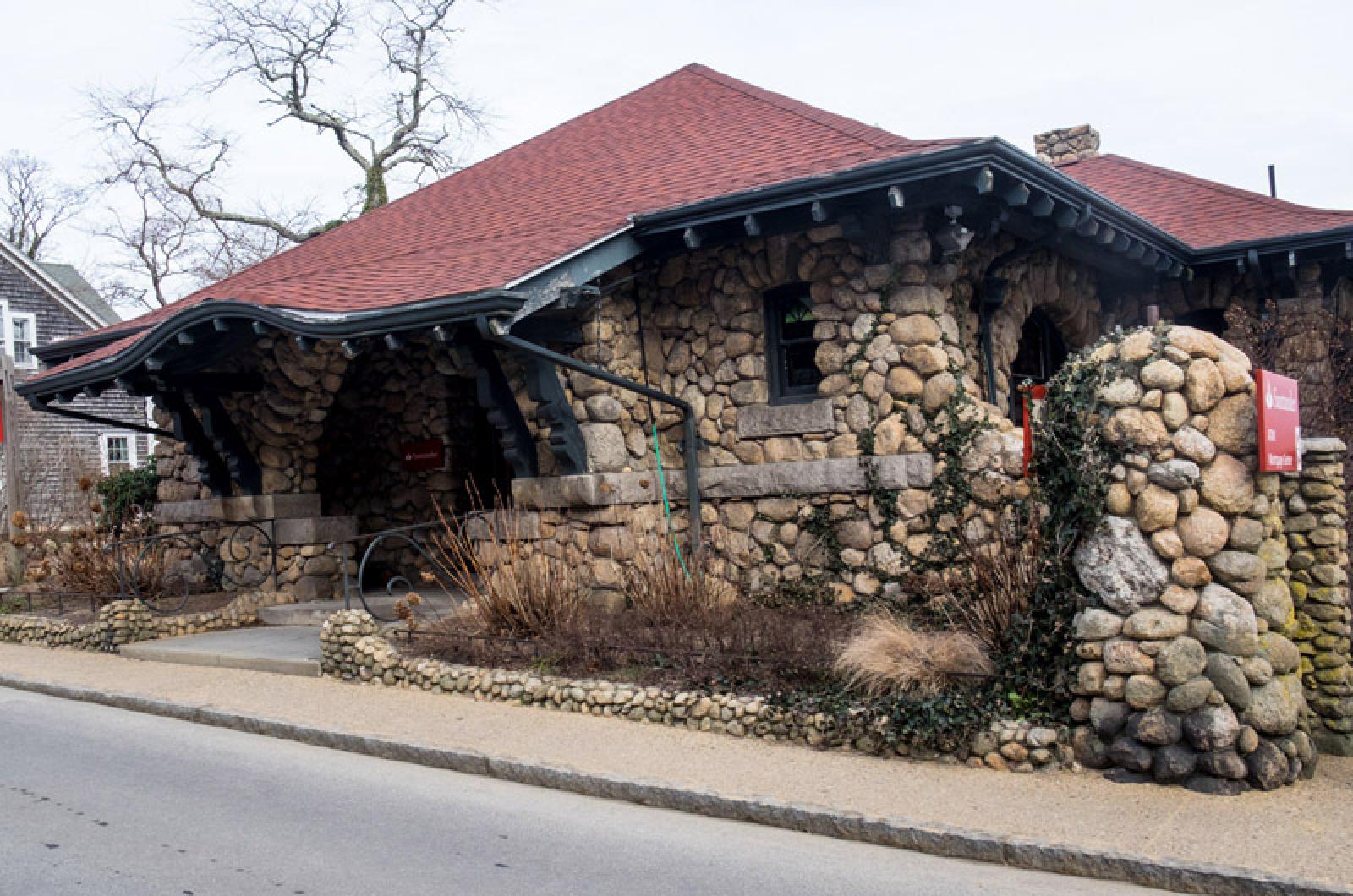A complicated plan to turn the historic stone Santander Bank property in downtown Vineyard Haven into a mixed-use condominium and commercial development came before the Martha’s Vineyard Commission at a public hearing Thursday night.
The plan proposes renovating two existing turn-of-the-century, red-roofed buildings on the property and constructing five additional structures, creating a total of 11 residential units and six commercial spaces, as well as pedestrian pathways, a residential courtyard and a pocket park. The applicant is architect and developer Sam Dunn.
The project, which is located in the town’s B1 business district, was referred to the commission by the Tisbury planning and zoning boards back in the fall of 2020. Due to zoning laws, most of the buildings would have commercial space on their bottom floors with residential units above.
Mr. Dunn is currently in the process of purchasing the property from Santander, which has been on the market since 2017.
Planning concerns include wastewater, the historic character of the buildings, stormwater and climate change resilience, and affordable housing mitigation. The project would have one deed restricted affordable unit.
The property has also had its wastewater allotment increased twice in the past year by approximately 1,300 gallons of flow per day, which has become a point of concern as the Tisbury sewer plant nears capacity.
At the meeting Thursday, Mr. Dunn described his vision for the development, saying that a downturn in the retail, commercial market and an upturn in the residential market made a hybrid, or mixed-use development the best option for the space. The property has frontage on both Main street and the Vineyard Haven harbor, as well as Union street.
“It’s sort of a tortured geography,” Mr. Dunn said. “This site would never be suitable for 100 per cent commercial development. The market isn’t there.”
But he said the proposed development would still provide a needed “shot in the arm” for the downtown district, which currently has five empty storefronts on Main street, according to Mr. Dunn, while the living units would be geared toward people who wanted to downsize. In his presentation, Mr. Dunn proposed putting retail and office spaces in the buildings, and said he was working on a deal to move the Martha’s Vineyard Chamber of Commerce to the old bank drive-through building.
“I think it’s a win-win,” Mr. Dunn said.
The project currently could not include a restaurant due to wastewater restrictions.
Commissioners asked questions about building elevations, small changes to the exterior of the historic bank building, accessibility, and stormwater runoff. Parts of the project are located within the 100-year floodplain. Mr. Dunn discounted those concerns, saying that most modern extreme weather events come with ample warning.
Commissioners also grappled with the project’s affordable housing mitigation. Although Mr. Dunn has not yet made an offer on mitigation, commission policy states that the applicant would owe $192,000, considering the 6,000 square feet of additional retail space. Commissioner Brian Packish said the applicant should be owed a credit because parts of the property were previously commercial uses.
“It seems like some credit is due based on past precedent for the existing square footage,” Mr. Packish said.
Mr. Dunn agreed.
“I do object strenuously to the idea of paying a $200,000 mitigation,” Mr. Dunn said.
Harold Chapdelaine, chairman of the Tisbury historic district commission, praised the project, saying it would be a benefit to downtown Vineyard Haven.
Phil Wallis, head of the town cultural commerce association, said it would serve as an anchor for the end of the town’s working waterfront.
“It is truly part of the gateway that we are all trying to work very hard on,” Mr. Wallis said.
Abutter Peter Stam, who owns a house on the harbor that can be accessed through the property, also spoke in favor of the development.
“I actually do think this is a good project for Vineyard Haven,” Mr. Stam said. “We are really in favor of this project.”
Commissioners closed the public hearing and left the written record open for two weeks, asking for Mr. Dunn to make an offer for affordable housing mitigation.







Comments (4)
Comments
Comment policy »